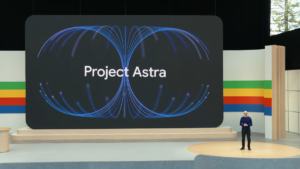Michelangelo Benchmark from DeepMind Exposes the Limitations of Long-Context LLMs

Understanding Large Language Models and Long Context Windows
Large language models (LLMs) have gained significant attention, particularly those with the ability to process very long context windows. These models can handle thousands, and even millions, of tokens in a single prompt, expanding their potential applications for developers. However, a key question emerges: how effectively do these LLMs comprehend and utilize the extensive information they receive?
The Challenge of Long-Context Understanding
Researchers from Google DeepMind have unveiled a new evaluation benchmark known as Michelangelo, specifically designed to assess the reasoning capabilities of LLMs in handling long contexts. Recent findings indicate that while these advanced models demonstrate improvements in information retrieval across large datasets, they still face challenges when tasked with reasoning about the organization and structure of the data.
The Need for Enhanced Evaluation Metrics
As LLMs continue to evolve, the creation of benchmarks that accurately measure their capabilities has become increasingly important. Traditional evaluations often focus on retrieval tasks, like the “needle-in-a-haystack” method, where models search for specific data points within extensive contexts.
Kiran Vodrahalli, a research scientist at Google DeepMind, emphasized the necessity for deeper insights. "Models have indeed become more adept over time in long-context scenarios," he noted, "but it’s crucial we ascertain if they can tackle more complex reasoning tasks that they manage well in shorter contexts."
Relying solely on retrieval tasks can be misleading, as it may not assess a model’s real understanding of text relationships and structures. Consequently, many current benchmarks fall short in genuinely evaluating a model’s reasoning abilities in extensive contexts.
Introducing Michelangelo
Michelangelo addresses these existing shortcomings by offering a focused framework for evaluating reasoning in long-context scenarios. The concept is akin to a sculptor revealing a statue from unrefined marble, highlighting models’ capabilities to decipher and assess relationships within lengthy text passages rather than merely retrieving facts.
Core Tasks of Michelangelo
Michelangelo includes three fundamental tasks:
Latent List: This task involves processing a lengthy sequence of Python list operations. The model must filter out unnecessary or redundant data and determine the final state of the list. This measures the ability of a model to track the characteristics of a latent data structure throughout a series of commands.
Multi-Round Co-Reference Resolution (MRCR): In this task, the model must analyze a conversation between a user and an LLM, accurately referencing previous dialogue even amid distractions. This tests the model’s understanding of narrative flow and its ability to manage multiple drafts of conversation while reproducing specified context from prior exchanges.
- “I Don’t Know” (IDK): Here, the model reads a story and answers multiple-choice questions related to it. For some queries where the answer is absent from the context, the model must accurately claim it does not know the answer. This assesses the model’s awareness of its knowledge limits based on the presented information.
Framework for Latent Structure Queries
The tasks in Michelangelo are grounded in a novel system called Latent Structure Queries (LSQ). This framework offers a systematic method for designing evaluations for long-context reasoning that can adapt to various lengths. It also emphasizes extracting implicit information rather than just retrieving basic facts. By synthesizing testing data, LSQ avoids the risk of data leakage into training sets, ensuring a more accurate assessment of model performance.
Evaluating LLMs with Michelangelo
The researchers assessed ten state-of-the-art LLMs using Michelangelo, including various versions of Gemini, GPT-4, and Claude. These evaluations scrutinized how well these models performed with context sizes of up to a million tokens. Findings revealed noteworthy differences in performances across the models: Gemini excelled in MRCR, GPT models were adept at the Latent List task, and Claude 3.5 Sonnet emerged as a top performer in the IDK evaluations.
Despite these variations, all models displayed a significant performance drop when confronted with increasingly complex reasoning challenges. This suggests that even with their substantial context processing capabilities, current LLMs still require further improvement in their reasoning abilities, especially over vast amounts of information.
In real-world applications, where models cannot solely depend on their pre-training schemas and must engage in multi-step reasoning across diverse information points, these findings suggest that effectiveness may diminish as the context expands. Such scenarios become particularly challenging when large amounts of irrelevant information cloud the model’s ability to identify what is pertinent to the task.






